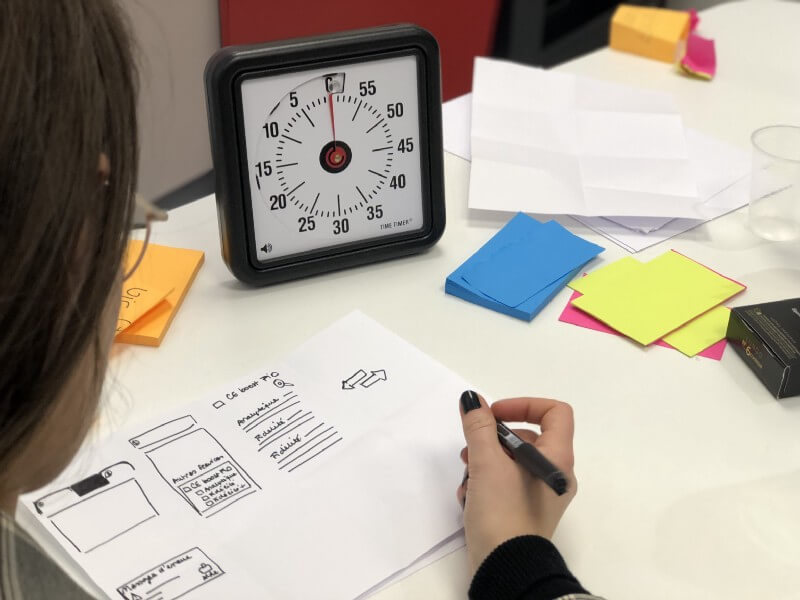
By now, you probably already know design is more than just aesthetics. Of course visuals are important, but the tools designers use to create meaningful products apply to experiences, services, and processes as well. IDEO’s design thinking method illustrates how to apply these practices to any business problem, and it’s become a major part of the business world. Design forward companies use creative thinking to improve all aspects of their business, both internally and externally.
2018 brought new evidence that design was key to market success and happy customers. Business schools now incorporate design thinking into their curricula, and last October McKinsey & Company released their comprehensive report on the business value of design, noting “The potential for design-driven growth is enormous in both product and service based sectors”. But are businesses actually finding value from design?
“The potential for design-driven growth is enormous in both product and service-based sectors”
McKinsey’s report brought something new to the table with their research showing design-forward companies are performing better financially by as much as two to one. This year, it’s time to start incorporating these practices into your business. Good news, you can quickly adopt a few simple strategies to jump-start a design mentality and boost innovation in your company.
Utilize a rapid prototyping approach to work quickly, try new ideas, and be quick to innovate based on what works. How do you do this?

Learn what works for you, and start experimenting around that. Have a great video that does well on social media? Try building similar content for other channels or topics. Don’t be afraid to renovate old practices, either. If performance is just okay, there’s an opportunity to try something new.
First adopters in new fields always have an advantage. If you can be the first in your area using a new product or method of selling or marketing, that will give you a leg up, even if it sounds intimidating.
Part of design is prototyping, and prototyping means you need to test with something that’s tangible. From sketches on paper to interactive tools, invest in platforms that help convey your ideas quickly, make changes easily, and use a DIY approach to work hands-on.
Have a wild idea or a risky project? Don’t shelve it because it’s different from what you’ve done before. McKinsey finds that companies who invest in early-stage processes and don’t back off too soon perform better in the long run. Moral of the story? Be willing to take a chance on innovative measures like new ideas, updated technology, and experience improvements. Failure is part of the process, and innovation pays in the long run.
As we saw in 2018, companies who failed to respond to the needs of their users were in trouble. While customer service plays a role in implementing solutions to those problems, oftentimes design is required to create a new approach and devise products and practices that can prevent these issues in the future. If a product or service is not designed to fulfill the needs of its users as easily as possible, it might be in need of a makeover.
Take time to walk in their shoes, map their journey with your brand. They might not know the solutions, but they’re often the first to find the problems. Use customer feedback to find pain points, and then iterate solutions to transform those points into strengths. Really listen to what they’re saying: even things that aren’t problems to be solved might suggest new opportunities.

Businesses can gain great insights from mapping customer journeys and using digital touch-points that shed light on how customers engage with their brand. Use whitepapers? Playbooks? PDFs? Transform these assets into something interactive, letting them choose their own adventure through your brand, then you’ll see where they’re most engaged. Actions speak louder than words, so use tools that let their behavior speak for itself.
Betas and focus groups are about more than catching bugs and ensuring sales. Talk to your users during product development to answer design-oriented questions as well. Does your product do what they expect it to? Does it fill their needs? Do they enjoy using it? Good design can help both you and your customers thrive.
They won’t tell you what you don’t ask — so make the conversation as open as possible. Things like online reviews, feature requests, and auto-prompted surveys give you a chance to hear what your customers think on a regular basis and respond straight to the source.
Experience design is one of the biggest topics in design right now. Whether that means making your user interfaces more intuitive, your processes more playful, or your content more accessible, your company will gain far more loyalty from your customers (and employees) as you make their life easier by making your platforms more pleasant.

Nothing is too big or too small: every interaction a customer has with your company is a chance to create a memorable experience. Don’t just focus on your final product — look at all aspects of your journey with creativity to see where opportunities arise.
Any burden that can be taken off the customer should be. Look for ways to make their interactions with you easier for them. Maybe you have a complicated sales process, troublesome onboarding, or a large volume of paperwork. Make these more interactive and streamline the processes wherever possible.
Ever gotten a handwritten note in a package you ordered? Or had such a good time in a store you didn’t want to leave? When brands creatively expand on basic processes, they stand out from their competition by bringing another level to their experience. You don’t just want your customers to use you; you want them to love using you.
Design thinking isn’t just for designers anymore. By adopting an innovation-oriented mindset, companies can position themselves to move quickly and adapt effectively. With thoughtful design, products and processes can have an immensely positive impact on customer experiences, employee happiness, and your bottom line.
Consider design as a way to creatively solve problems and prevent future ones, not just a polish that makes things sleek. Collect user feedback to gain insight, ask questions and iterate to find solutions, and mind the details that make an experience special. Test these strategies and you’ll see how a mindset of design can uncover enormous value for your business.
Ready to try these strategies for yourself? Tiled can help. Learn more at tiled.co or sign up to talk to an expert.